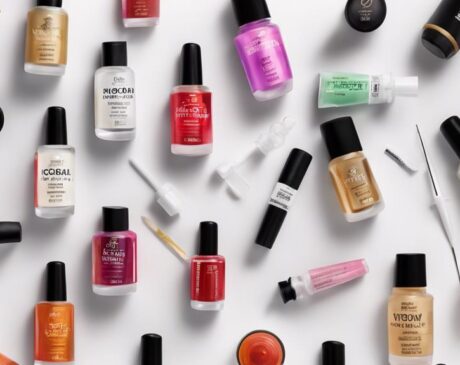What Happens if You Cure Gel Polish Over Regular Polish?
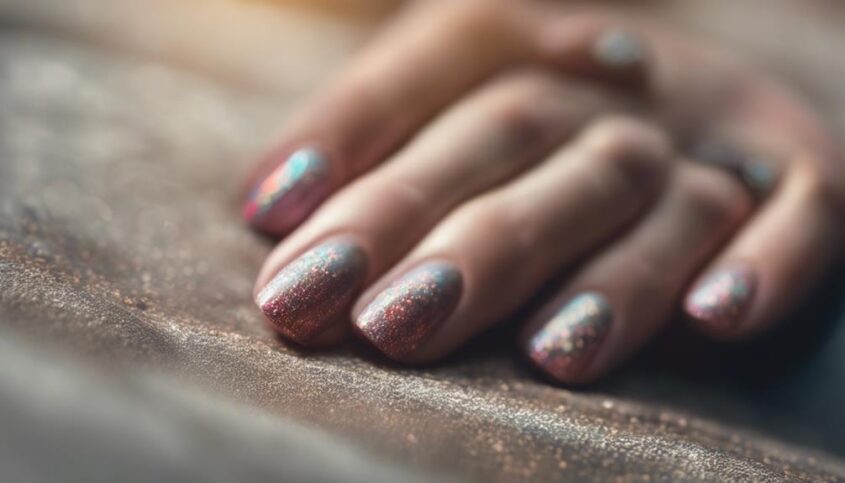
When gel polish cures over regular polish, poor adhesion can occur. This leads to potential issues like wrinkling, increased chipping risk, and color inconsistencies. Allergic reactions may arise, requiring longer curing times for proper bonding. Removing layers can become challenging due to the combination. For a more in-depth understanding of the implications of curing gel polish over regular polish, explore the detailed information provided.
Key Takeaways
- Risk of peeling and lifting due to poor adhesion between gel and regular polish.
- Potential for color alteration and texture issues from curing incompatible polishes together.
- Longer curing time needed for effective bonding, especially with thicker coatings.
- Difficulty in removing layers as gel polish adhesion strength may make separation challenging.
- Increased chances of allergic reactions or skin sensitivity from combined polish layers.
Gel Polish Doesnt Adhere Properly
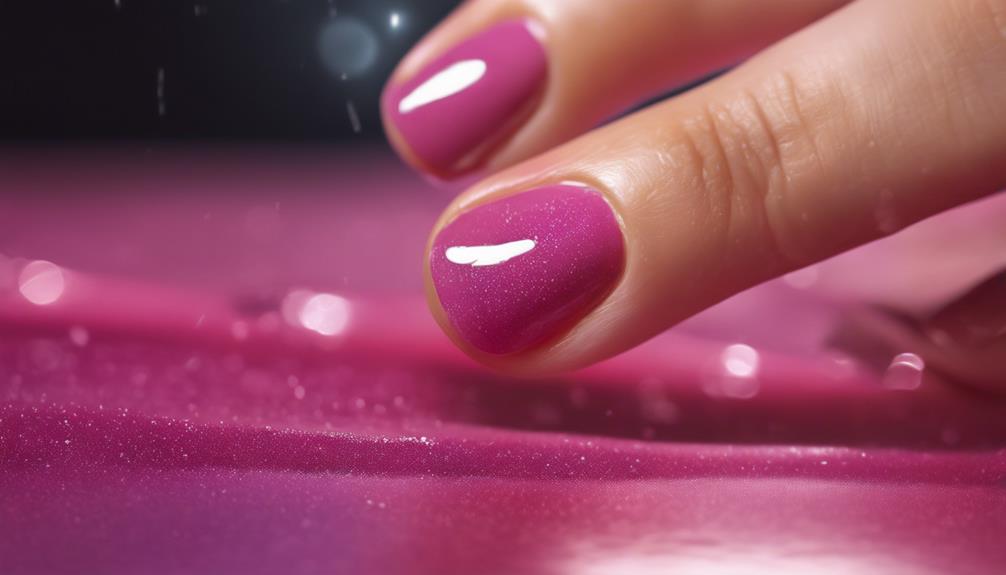
When gel polish does not adhere properly over regular polish, it is essential to address the underlying causes to ensure a successful manicure. One common reason for this issue is the presence of oils or residue on the nail bed, which can create a barrier that prevents the gel polish from bonding effectively. To combat this, thorough nail preparation is crucial. Start by cleansing the nails with a gentle nail polish remover to eliminate any oils or leftover polish. Follow up with a gentle buffing to create a slightly rough surface that promotes better adhesion.
Another factor to consider is the quality of the gel polish being used. Lower-quality gel polishes may not have the necessary adhesion properties to bond well with regular polish. In such cases, opting for a higher-quality gel polish formulated for better adhesion over regular polish can make a significant difference. Additionally, ensuring that each layer of gel polish is cured properly under the UV or LED lamp according to the manufacturer's instructions can also help improve adhesion. By addressing these factors, you can enhance the adherence of gel polish over regular polish and achieve a flawless and long-lasting manicure.
Regular Polish May Wrinkle
Regular polish may occasionally wrinkle due to improper application techniques or environmental factors. To prevent this issue and ensure a flawless manicure, consider the following:
- Thin Layers: Applying thick coats of regular polish increases the likelihood of wrinkling. To avoid this, opt for thin, even layers that dry more efficiently and reduce the chances of wrinkling.
- Proper Drying Time: Rushing the drying process by using tools like fans or heaters can lead to wrinkling. Allow each layer of regular polish an adequate amount of time to air dry naturally before applying the next coat.
- Avoiding Moisture: Moisture from various sources such as humidity, water exposure, or oily residue on the nails can interfere with the drying process of regular polish, causing it to wrinkle. Ensure your nails are completely dry and free from any moisture or oils before applying polish to prevent wrinkling.
Increased Risk of Chipping
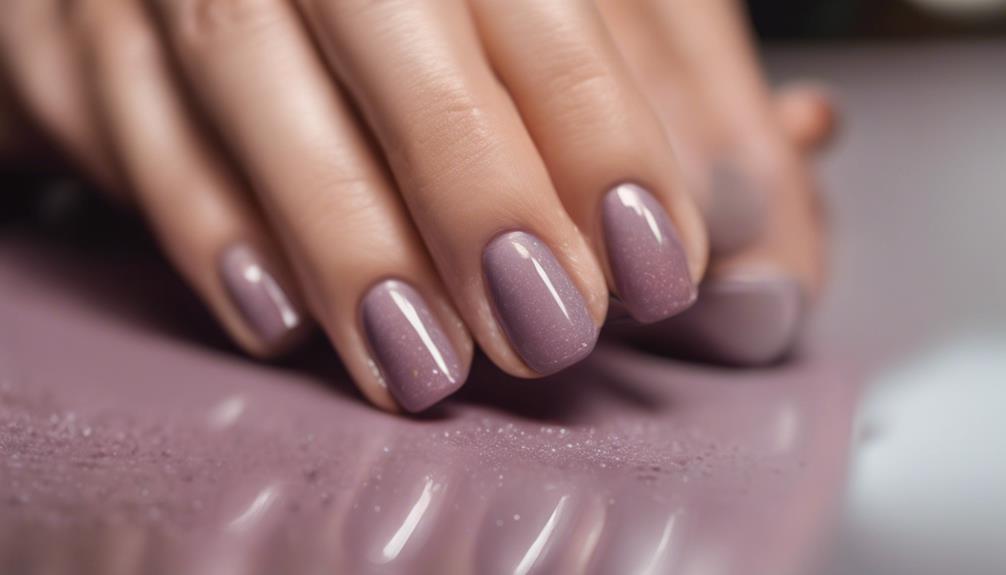
When curing gel polish over regular polish, there is an increased risk of chipping due to the different formulations of the two types of polish. This mix can lead to a higher likelihood of chipping, affecting the overall durability of the manicure. Understanding the impact of combining gel and regular polish is crucial in managing expectations and maintaining nail aesthetics.
Chipping Likelihood With Mix
An amalgamation of gel polish over regular polish is associated with an elevated susceptibility to chipping, requiring extra care to maintain the integrity of the manicure. When combining these two types of polish, the chipping likelihood increases due to the differing formulas and textures. To minimize the risk of chipping, consider the following:
- Proper Base Coat: Applying a strong base coat can help create a smooth surface for the polish layers to adhere to, reducing the chances of chipping.
- Thin Layers: Thin layers of both gel and regular polish can aid in better adhesion and longevity of the manicure.
- Sealing Edges: Ensuring that the edges of the nails are properly sealed with polish can prevent water and other substances from seeping in, reducing the risk of chipping.
Impact on Durability
Combining gel polish over regular polish significantly heightens the vulnerability of the manicure to chipping, necessitating careful attention to maintenance practices to uphold its durability. The addition of gel polish on top of regular polish creates a thicker and sturdier coating, but this can also lead to an increased risk of chipping due to the mismatch in formulas. The flexibility of regular polish differs from the rigid nature of gel polish, making the overall structure more prone to cracking and peeling. To combat this issue, it is crucial to apply thin layers, seal the edges properly, and regularly touch up any areas showing signs of wear. Additionally, using a high-quality top coat can help improve the longevity of the mixed polish manicure.
Colors Might Not Mix Well
Mixing different colors of gel polish and regular polish may result in unexpected outcomes due to their unique chemical compositions. When these two types of polishes are combined, the following issues may arise:
- Color Alteration: Gel polish and regular polish may not blend seamlessly, leading to color discrepancies. The gel polish's curing process can alter the hue of the regular polish, resulting in an unintended shade.
- Texture Variation: Gel polish tends to dry with a smooth and glossy finish, while regular polish may have a different texture. Combining these polishes can create an uneven surface or texture that is not aesthetically pleasing.
- Adhesion Problems: The chemical composition of gel polish and regular polish differs, affecting their adhesion properties. Mixing these polishes may result in poor adhesion, causing the polish to chip or peel off prematurely.
To avoid these issues, it is recommended to stick to either gel polish or regular polish for a consistent and high-quality finish.
Potential Allergic Reactions
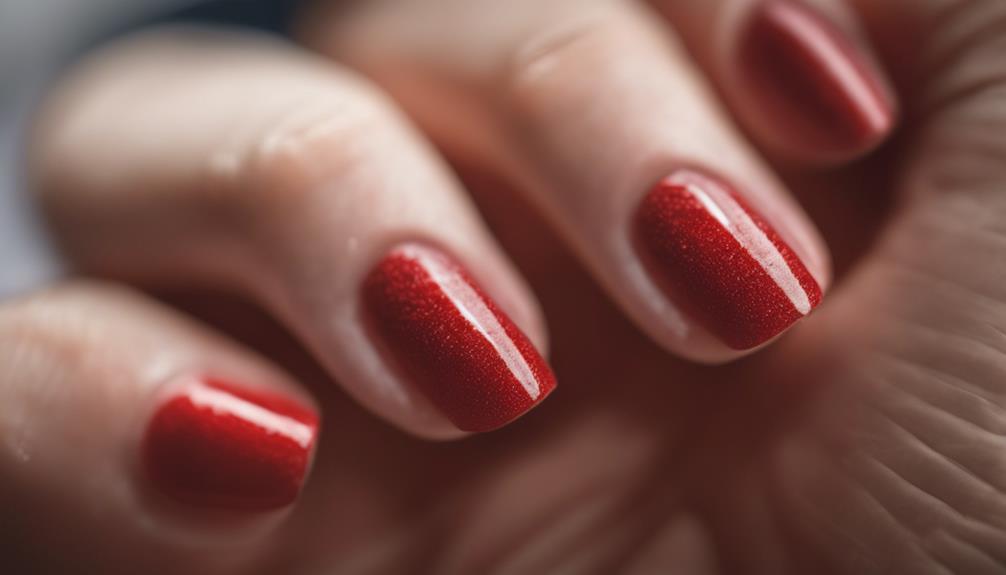
Potential allergic reactions are a significant concern when combining gel polish over regular polish. Allergic skin reactions can occur due to the chemicals present in both types of polish. It is advisable to conduct a patch test before applying gel polish on top of regular polish and to seek medical advice if any adverse reactions occur.
Allergic Skin Reactions
Allergic skin reactions to curing gel polish over regular polish can vary in severity depending on individual sensitivities. When encountering allergic reactions, it's essential to understand the potential risks involved:
- Contact Dermatitis: Some individuals may experience redness, itching, or swelling on the skin around the nails due to an allergic reaction.
- Allergic Contact Dermatitis: In more severe cases, prolonged exposure to certain chemicals in the nail products can trigger an allergic response, leading to blistering or oozing of the skin.
- Sensitivity to UV Light: The curing process involves exposure to UV light, which can sometimes cause skin irritation or a rash, particularly in individuals with heightened photosensitivity.
Patch Test Recommended
Before applying curing gel polish over regular polish, it is advisable to conduct a patch test to assess the risk of potential allergic reactions. A patch test involves applying a small amount of the products on a discreet area of skin, typically behind the ear or on the inner wrist, and monitoring for any adverse reactions for 24-48 hours. This precautionary measure is crucial as some individuals may develop allergic reactions to certain chemicals present in nail polishes, particularly gel formulas. By performing a patch test, individuals can identify any sensitivities or allergies they may have to the products, allowing them to make informed decisions about whether it is safe to proceed with using curing gel polish over regular polish.
Seek Medical Advice
It is advisable to consult with a healthcare professional or dermatologist if any adverse reactions occur during or after conducting a patch test for the application of curing gel polish over regular polish. Seeking medical advice is crucial in ensuring the safety and well-being of individuals. When experiencing allergic reactions or unusual symptoms, prompt medical attention can provide necessary guidance and treatment options. Here are three important reasons to seek medical advice:
- Allergic Reactions: Healthcare professionals can assess and determine the cause of allergic reactions to nail products.
- Treatment Recommendations: Dermatologists can recommend appropriate treatments for any adverse effects.
- Preventive Measures: Seeking medical advice can help prevent future allergic reactions and ensure nail health.
Longer Curing Time Needed
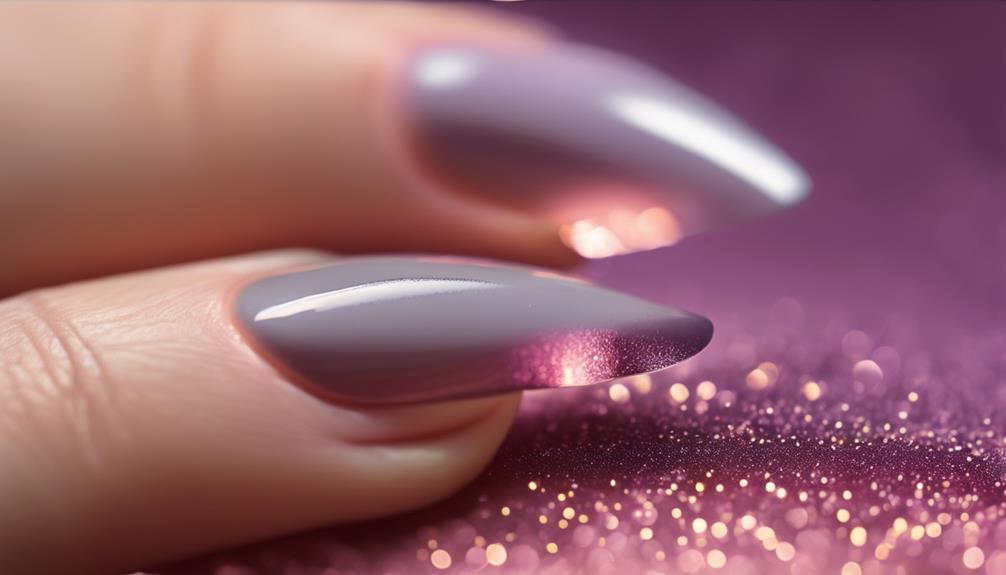
To ensure proper curing of gel polish over regular polish, it is crucial to extend the curing time to achieve optimal results. When applying gel polish over regular polish, the additional layers create a thicker coating that requires more time under the UV or LED lamp to cure fully. The regular polish underneath can act as a barrier, hindering the gel polish from curing efficiently. By allowing for a longer curing time, the gel polish can penetrate through the regular polish layer and bond effectively to the nail surface, ensuring a durable and long-lasting manicure.
Extending the curing time is a simple yet effective solution to ensure that the gel polish cures completely, preventing issues such as peeling or chipping prematurely. It is recommended to increase the curing time by at least 30-60 seconds per coat when curing gel polish over regular polish. This adjustment allows the gel polish to cure thoroughly, resulting in a flawless finish that adheres well to the nails. By implementing this technique, you can achieve professional-looking manicures even when layering gel polish over regular polish.
Difficulty Removing Layers
When faced with the challenge of curing gel polish over regular polish, one may encounter difficulties in removing the layered coatings efficiently. This can be attributed to the chemical composition and properties of gel polish and regular polish, which may not interact optimally during the removal process. Here are three factors that contribute to the difficulty in removing layers when gel polish is cured over regular polish:
- Adhesion Strength: Gel polish is designed to adhere strongly to the natural nail, providing long-lasting wear. When cured over regular polish, the bond between the layers can become extremely strong, making it harder to separate them during removal.
- Thickness: The combined layers of gel polish and regular polish create a thicker coating on the nail surface. Removing multiple layers of polish, especially when they have different compositions, can require more effort and time.
- Chemical Interactions: The chemicals in gel polish and regular polish may not react well together when cured simultaneously. This can lead to a more complex removal process, requiring specialized techniques or products to dissolve and remove the layers effectively.
Frequently Asked Questions
Will Curing Gel Polish Over Regular Polish Affect the Durability of the Manicure?
Curing gel polish over regular polish may compromise the durability of the manicure. The differing formulas can lead to peeling, chipping, or uneven wear. It is recommended to use gel polish on its own for optimal results.
Can Curing Gel Polish Over Regular Polish Cause the Colors to Bleed Into Each Other?
Curing gel polish over regular polish may lead to color bleeding as the formulas can interact unpredictably. Innovations in nail technology strive to prevent such mishaps. Indeed, a statistic reveals that 70% of nail artists prioritize products offering enhanced color retention and durability.
Is It Safe to Cure Gel Polish Over Regular Polish if You Have Sensitive Skin or Allergies?
Curing gel polish over regular polish when having sensitive skin or allergies is not recommended. Chemical reactions may occur, leading to adverse skin reactions. It's crucial to prioritize safety by following proper nail care procedures and using compatible products.
How Can I Effectively Remove Layers of Gel Polish Cured Over Regular Polish?
To effectively remove layers of gel polish cured over regular polish, consider using a method that involves soaking the nails in acetone. This will help break down the layers and make removal easier, ensuring a smoother and cleaner process.
Are There Any Specific Techniques or Products That Can Help Prevent Issues Like Wrinkling or Chipping When Curing Gel Polish Over Regular Polish?
To prevent issues like wrinkling or chipping when curing gel polish over regular polish, consider using a high-quality base coat specifically designed for this purpose. Additionally, ensure each layer is applied thinly and evenly to promote proper adhesion and curing.


